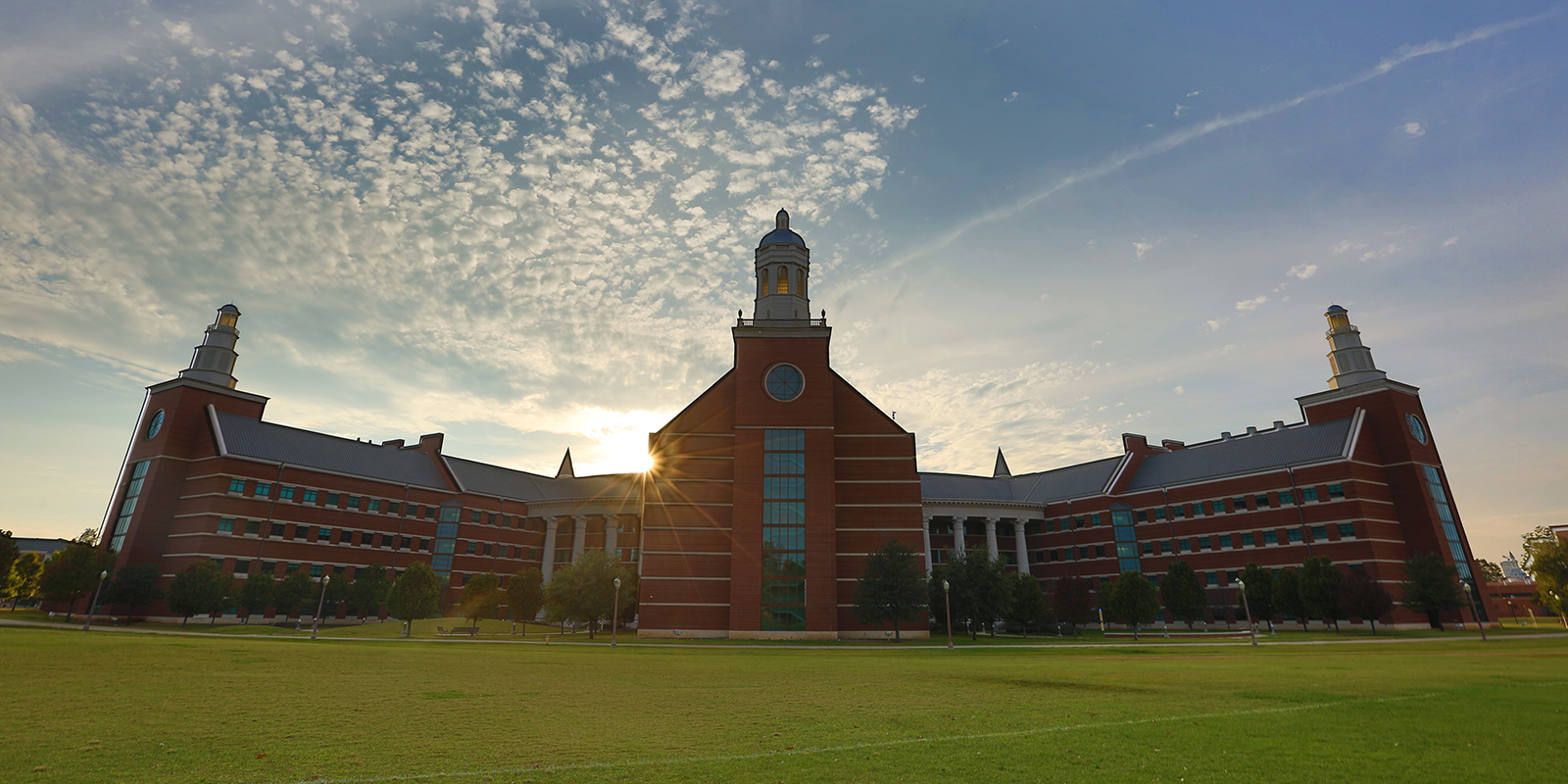Happy 15th birthday, Baylor Sciences Building!

As strange as it may seem to current Baylor students, the now iconic Baylor Sciences Building — or BSB, as it’s come to be known in campus shorthand — wasn’t always here. For more than one generation of Bears, science classes meant heading to Marrs McLean Science Building (which is now home to the School of Education). The corner of University Parks and Bagby was completely covered in intramural fields.
Fifteen years ago this fall, that all changed — and changed Baylor for the better.
The Baylor Sciences Building opened in 2004, wowing incoming students, transforming science education at Baylor and positioning the University for even greater accomplishments. (In fact, the BSB was dedicated 15 years ago today.) Whether you’re a Baylor science major who spent countless hours in the building’s 150+ labs and nearly 40 classrooms, or you’ve only seen the building towering over University Parks, there are a few BSB facts everyone should know:
1. Campus colossus — The BSB is far and away the biggest academic building on Baylor’s campus. How big? At 508,000 square feet, the building houses essentially 11.5 acres of classes, labs, offices and common spaces across four floors and five wings. At the time it was built, the $103 million facility was the largest building project in school history, now surpassed in cost only by McLane Stadium.
2. Raising the bar — Think about the most exciting new facilities and initiatives at Baylor over the last decade: McLane, the Foster Campus for Business & Innovation, even future construction for a new visitors center or basketball pavilion. It’s not a stretch to say that the BSB raised the bar that led to all those projects by leading the Baylor Family to dream bigger.
3. Advancing Baylor’s academics — Work that takes place inside the BSB will play an important role as Baylor works to attain the goals of Illuminate, the strategic plan to become a leading research institution and the preeminent Christian research university. If you look at the benchmarks toward becoming an “R1” university, many involve the university’s investment in the sciences. When you understand the work that’s taking place inside the BSB right now, it’s easy to see why.
4. Addressing challenges — And what might you find inside the BSB? It goes far beyond what most of us whose lab experiences maxed out in high school could imagine. You’ll find some of the nation’s top scientists and researchers inside the BSB driving the search for solutions to some of society’s biggest challenges — from cancer to hearing loss to trauma to stress. It’s not a stretch to think that you’ll someday benefit from breakthroughs that occurred right here on campus.
5. Recruiting tool — When McLane Stadium opened, everyone talked about what a great recruiting tool it would be. The same holds true for the BSB. Whether you’re a college professor, a soon-to-be undergraduate or a postgraduate student, you’re not going to find many facilities as impressive as the Baylor Sciences Building. The BSB was the tipping point for Dr. Steven Driese, professor and interim chair of geosciences and associate dean for research in the Baylor Graduate School, when he came here from the University of Tennessee in 2004. Fifteen years later, as Baylor attracts faculty from places like Yale, UCLA and other Texas research universities, it continues to move the needle in helping top professors choose Baylor.
Sic ’em (and happy birthday), Baylor Sciences Building!

